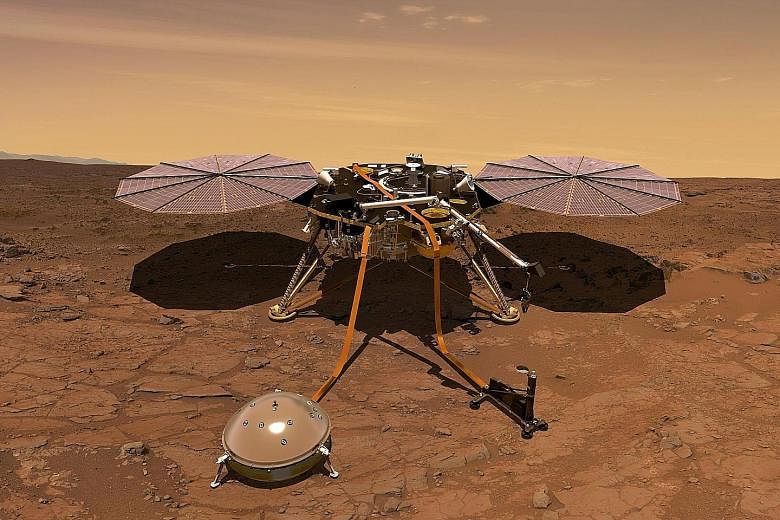TAMPA (Florida) • Nasa is poised to launch its first lander to Mars since 2012, an unmanned spacecraft called InSight that aims to listen for quakes and unravel the mystery of how rocky planets like Earth form.
It is scheduled to launch today at 7.05am (7.05pm Singapore time) from Vandenberg Air Force Base in California and, if all goes as planned, it should land on the Red Planet on Nov 26 after a 482 million km journey.
Since the Earth and Mars probably formed by similar processes 4.5 billion years ago, the United States space agency hopes the lander - officially known as Interior Exploration using Seismic Investigations, Geodesy and Heat Transport (InSight) - will shed light on what made them so different.
"How we get from a ball of featureless rock into a planet that may or may not support life is a key question in planetary science," said Dr Bruce Banerdt, InSight principal investigator at Nasa's Jet Propulsion Laboratory in Pasadena, California.
On Earth, these processes have been obscured over billions of years by earthquakes and the movement of molten rock in the mantle, he said. But Mars, the fourth planet from the Sun and Earth's smaller and less geologically active neighbour, may yield more clues.
After touching down, InSight will spend the next two years sitting patiently in the middle of Elysium Planitia, a vast, flat plain near the Martian equator.
The lander's dome-shaped seismometer resembles the tools used to detect quakes on Earth.
But the biggest seismic waves on this planet are generated by tectonic plates drifting and colliding. Tremors on Mars - if they happen - are probably caused by its cooling.
InSight's seismometer is capable of giving scientists insight into lingering questions about the planet's interior, such as: Where is the boundary between crust and mantle? And are there plumes of active volcanoes or reservoirs of liquid water hiding beneath the surface?
Another instrument, the Heat Flow and Physical Properties Probe, will drill almost 5m into the planet's surface - farther than any craft has dug. Its goal is to measure the geothermal heat coming out of Mars as a result of radioactive decay. That in turn should reveal the kinds of materials from which Mars first formed.
Meanwhile, two antennae will track how the north pole "wobbles" during the planet's orbits around the sun - an indicator of the size and composition of the Martian core.
A pair of mini-spacecraft are also launching on the rocket. Known as Mars Cube One, or MarCO, the briefcase-sized satellites "will fly on their own path to Mars behind InSight", and test tiny new deep space communications equipment, Nasa said.
AGENCE FRANCE-PRESSE, WASHINGTON POST

